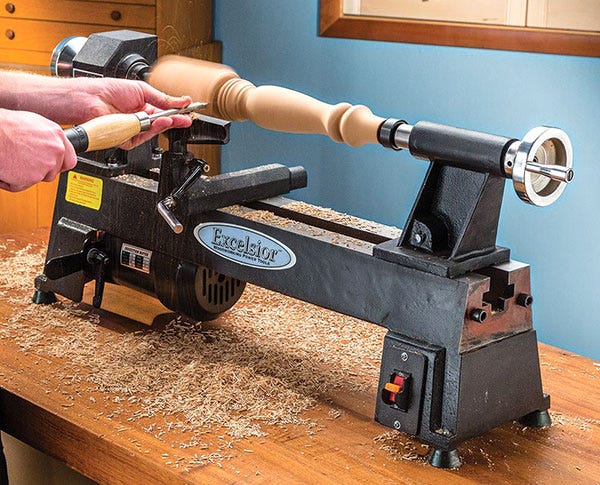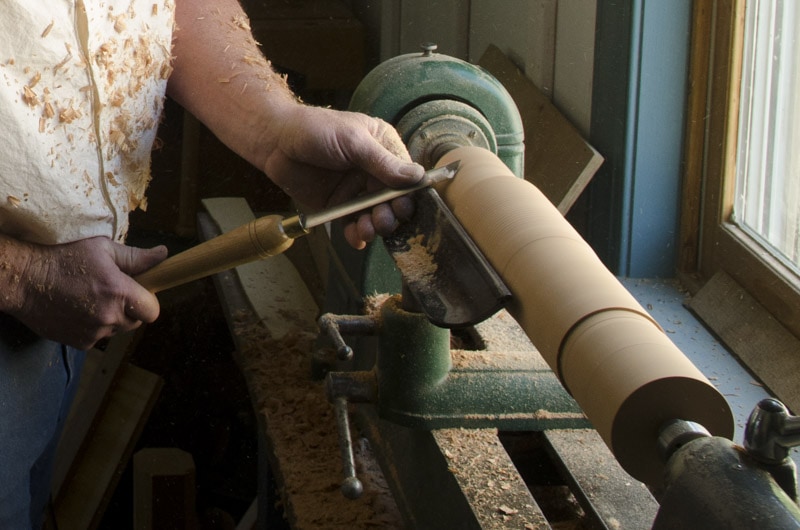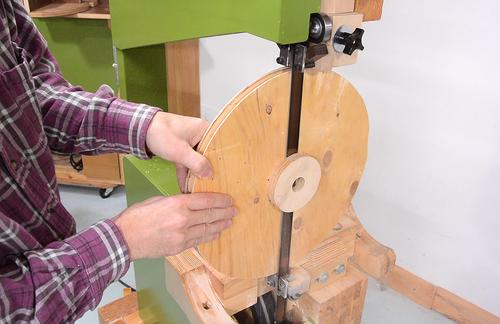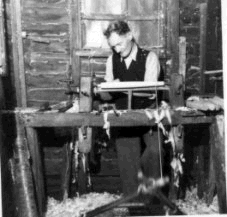Can you woodwork in an apartment? If you’ve ever wondered about pursuing your woodworking passion while living in an apartment, you’re in the right place. In this article, we’ll explore the exciting world of woodworking and the possibilities of creating in the comfort of your apartment. So, let’s dive in and discover all the ins and outs of woodworking in an apartment setting.
Woodworking is a fascinating hobby that allows you to craft beautiful pieces from wood. But can you indulge in this creative endeavor in an apartment? The answer is a resounding yes! While space limitations can pose a challenge, there are plenty of ways to pursue woodworking in an apartment without compromising on your passion. From carving to sanding, and even limited woodworking projects, you can make it work within your apartment’s confines.
Whether you’re a beginner or an experienced woodworker, this article will provide you with practical tips, clever hacks, and creative solutions to set up a woodworking space in your apartment. Get ready to delve into the world of apartment woodworking and unlock the potential to unleash your creativity, even within the limited space of your apartment. Let’s get started on this exciting woodworking journey!

Woodworking in an Apartment: Is It Possible?
Woodworking is a popular hobby and craft that allows individuals to create beautiful and functional pieces using various types of wood. However, one common obstacle for those living in apartments is the limited space and potential noise concerns. In this article, we will explore whether it is possible to engage in woodworking activities in an apartment setting, and if so, the strategies and tips to make it work. Whether you’re a beginner looking to start woodworking or a seasoned woodworker in need of a space-saving solution, this article will provide valuable insights.
The Challenges of Woodworking in an Apartment
Living in an apartment presents unique challenges when it comes to woodworking. One of the primary concerns is the available space. Apartments typically have limited square footage, making it difficult to set up a dedicated workshop area. Additionally, many apartments have restrictions on noisy activities, and woodworking can be quite noisy. These challenges may discourage individuals from pursuing their woodworking passion. However, with some creativity, planning, and consideration, it is possible to overcome these obstacles and enjoy woodworking in an apartment setting.
One solution to the space issue is to utilize a compact and portable workbench. These workbenches are designed specifically for small spaces and can be folded or stored away when not in use. Additionally, investing in space-saving tools and equipment, such as multifunctional tools or compact power tools, can help maximize the available workspace. It is also important to consider noise reduction strategies, such as using quieter tools, working during specific hours designated by apartment management, or soundproofing the workspace.
Another challenge is the potential for sawdust and debris in an apartment environment. Woodworking often generates a significant amount of sawdust and wood chips, which can be difficult to clean in a confined space. Implementing a dust collection system or using a portable vacuum with a dust extraction feature can help minimize the mess. Additionally, setting up a designated area with proper ventilation or using a dust containment product can aid in containing the sawdust and maintaining a clean living space.
Strategies for Woodworking in an Apartment
When it comes to woodworking in an apartment, strategic planning and organization are key. Here are some strategies to make woodworking in an apartment more feasible:
- Create a Dedicated Workspace: Even if you don’t have an entire room to spare, designate a specific area for your woodworking activities. It can be a corner of a room or a section of a balcony. Having a dedicated space helps in organizing tools and materials and creates a sense of focus.
- Invest in Noise Reduction: Use tools and equipment specifically designed for quiet operation. Look for tools with built-in noise reduction features or consider purchasing sound-dampening mats or panels to absorb excess noise.
- Use Hand Tools: Hand tools can be an excellent alternative to power tools in an apartment setting. They are typically quieter and require less space. Consider learning traditional hand tool techniques to achieve the same results without the noise and space constraints.
- Utilize Community Spaces: Explore if your apartment complex offers shared workspaces or creative studios that can be used for woodworking activities. This option allows you to work in a larger area with specialized equipment while minimizing disturbance to your neighbors.
- Time Management: Be considerate of your neighbors and try to schedule your woodworking activities during reasonable hours. Communicate with your neighbors about your hobby and let them know your working hours to avoid any potential conflicts.
Tools and Equipment for Apartment Woodworking
When it comes to woodworking in an apartment, choosing the right tools and equipment is crucial. Here are some recommendations for apartment-friendly woodworking tools:
- Compact Power Tools: Look for power tools that are specifically designed for compact spaces. Many manufacturers offer compact versions of table saws, drills, and sanders that are portable and space-saving.
- Multifunctional Tools: Opt for tools that serve multiple purposes. For example, a combination miter saw and table saw can save space and provide versatility.
- Hand Tools: Invest in a set of quality hand tools. Hand planes, chisels, and saws are essential for traditional woodworking techniques and are typically quieter and require less space than power tools.
- Compact Workbench: Choose a workbench that can be folded or stored away when not in use. Look for benches with integrated tool storage to maximize space.
Benefits of Woodworking in an Apartment
While woodworking in an apartment comes with its challenges, there are several benefits to pursuing this craft in a confined space:
1. Accessibility and Convenience
Having a dedicated woodworking area in your apartment allows you to pursue your hobby conveniently and whenever inspiration strikes. You won’t need to commute to an external workshop or deal with the hassle of renting a dedicated space.
2. Skill Development
Woodworking in an apartment encourages you to hone your skills to work within space limitations. You’ll learn to be resourceful, efficient, and creative in utilizing your available workspace, which can enhance your problem-solving abilities.
3. Stress Relief and Mindfulness
Woodworking has been proven to be a therapeutic activity that promotes relaxation and mindfulness. Engaging in woodworking in the comfort of your apartment can provide a much-needed escape from everyday stressors.
4. Sense of Accomplishment
Completing woodworking projects in an apartment setting allows you to witness the transformation of raw materials into a finished piece right within your own living space. The sense of accomplishment and pride derived from creating something with your own hands is immensely rewarding.
Tips for Successful Apartment Woodworking
To make your woodworking experience in an apartment enjoyable and successful, consider the following tips:
1. Plan Ahead
Before starting a project, plan out your space and tools. Ensure you have all the necessary materials and equipment, and organize your workspace to optimize efficiency.
2. Noise Reduction
Invest in noise-reducing tools and equipment. Use sound-dampening materials and consider adding rugs or carpeting in the workspace to absorb excess noise.
3. Utilize Storage Solutions
Maximize your storage space by using wall-mounted shelves, storage bins, and tool organizers. Keeping your workspace organized will make it easier to find tools and materials and create a clutter-free environment.
4. Work in Phases
If space is limited, consider breaking down your projects into smaller phases. This allows you to work on one aspect at a time and reduces the need for large work areas.
5. Adapt to Hand Tools
Embrace hand tools to minimize noise and space requirements. Learn traditional woodworking techniques that rely on hand tools, such as hand planing and using chisels, to achieve the same results as power tools.
Conclusion
Woodworking in an apartment is indeed possible, although it comes with its unique challenges. By utilizing space-saving tools, implementing noise reduction strategies, and practicing good organization, you can pursue your woodworking hobby in the comfort of your apartment. The key is to plan ahead, be considerate of your neighbors, and embrace the versatility of hand tools. Remember, woodworking is a rewarding craft that can be enjoyed regardless of the limitations of your living space.
Key Takeaways:
- Woodworking can be done in an apartment if you have the right tools and take proper precautions.
- Choose smaller projects that don’t require heavy machinery or excessive noise.
- Invest in noise-reducing tools and equipment, such as a quiet woodworking router.
- Consider setting up a dedicated workspace in a spare room or corner of your apartment.
- Be mindful of your neighbors and communicate with them about your woodworking activities.
Frequently Asked Questions
Are you wondering if you can pursue woodworking in an apartment? We have compiled some frequently asked questions that will help you understand the possibilities and limitations.
1. Can I do woodworking in a small apartment?
Absolutely! Woodworking can be done in a small apartment with careful planning and consideration. While you may not be able to do large-scale projects that require heavy machinery, there are plenty of woodworking activities that can be done in a small space. Consider investing in compact tools, such as a benchtop table saw or a small workbench, that can be easily stored when not in use. You can also explore hand tool woodworking, which requires less space and equipment.
Additionally, think about noise and dust control. Using hand tools, such as hand planes and chisels, will generate less noise compared to power tools. To minimize dust, consider setting up a dust collection system or working near a window with a fan for ventilation. With the right setup and precautions, woodworking in a small apartment is definitely achievable.
2. What types of woodworking projects are suitable for an apartment?
There are various woodworking projects that are well-suited for an apartment setting. Some examples include:
– Small furniture pieces, like stools or end tables.
– Decorative items, such as shelves, picture frames, or wall art.
– Storage solutions, such as floating shelves or compact organizers.
– Woodworking accessories, like cutting boards or jewelry boxes.
When choosing projects, consider the space available in your apartment and the tools you have. Opt for projects that don’t require large pieces of wood or complicated joinery techniques. Starting with smaller projects will allow you to build your skills and confidence while working within the limitations of an apartment.
3. How can I minimize noise when woodworking in an apartment?
Woodworking can be noisy, but with some simple techniques, you can minimize the noise generated:
– Use hand tools whenever possible, as they produce less noise than power tools.
– Place rubber pads or foam mats under your workbench and tools to dampen vibrations.
– Consider using noise-reducing accessories, such as earmuffs or noise-canceling headphones.
– Schedule your woodworking activities during hours when your neighbors are less likely to be disturbed.
– Communicate with your neighbors about your hobby and assure them that you will take necessary measures to minimize noise.
By being mindful of the noise you generate and taking steps to minimize it, you can enjoy woodworking in your apartment without causing disturbances.
4. What safety precautions should I take when woodworking in an apartment?
Woodworking safety is crucial, regardless of the space you work in. Here are some important precautions to consider when woodworking in an apartment:
– Ensure proper ventilation by working near a window or using a fan to prevent the buildup of dust and fumes.
– Wear appropriate personal protective equipment (PPE), such as safety glasses, ear protection, and a dust mask.
– Organize your tools and materials to maintain a clutter-free workspace and reduce the risk of accidents.
– Use a fire extinguisher and have a first aid kit readily available in case of emergencies.
– Familiarize yourself with the proper handling of tools and follow safety guidelines provided by manufacturers.
By following these safety precautions, you can create a safe woodworking environment within your apartment.
5. How can I deal with limited space for storing woodworking tools in an apartment?
Storing woodworking tools in a limited space can be a challenge, but it’s not impossible. Here are some tips to maximize your storage space:
– Invest in modular tool storage systems that can be customized to fit your available space.
– Utilize vertical storage solutions, such as wall-mounted racks or pegboards, to make the most of your wall space.
– Consider portable toolboxes or tool chests with wheels, which can be easily moved and stored in a corner when not in use.
– Utilize multipurpose furniture, like a workbench with built-in storage or a coffee table with hidden compartments.
– Optimize your workspace layout to have tools easily accessible, minimizing the need for excessive storage space.
By being inventive and utilizing every inch of available space, you can find efficient storage solutions for your woodworking tools in your apartment.

5 Ways to Start Woodworking NOW!
Summary
Wondering if you can do woodworking in an apartment? Well, the good news is that you can! Although space might be limited, there are ways to pursue your woodworking hobby. You can try smaller projects and use portable tools. Just make sure to be considerate of your neighbors and take proper safety precautions.
Woodworking in an apartment requires some creativity and planning, but it’s definitely possible. Start by setting up a dedicated workspace and organizing your tools. Opt for quieter methods like hand tools and use noise-reducing techniques. Remember, with some adjustments, you can enjoy woodworking right from your apartment.

















